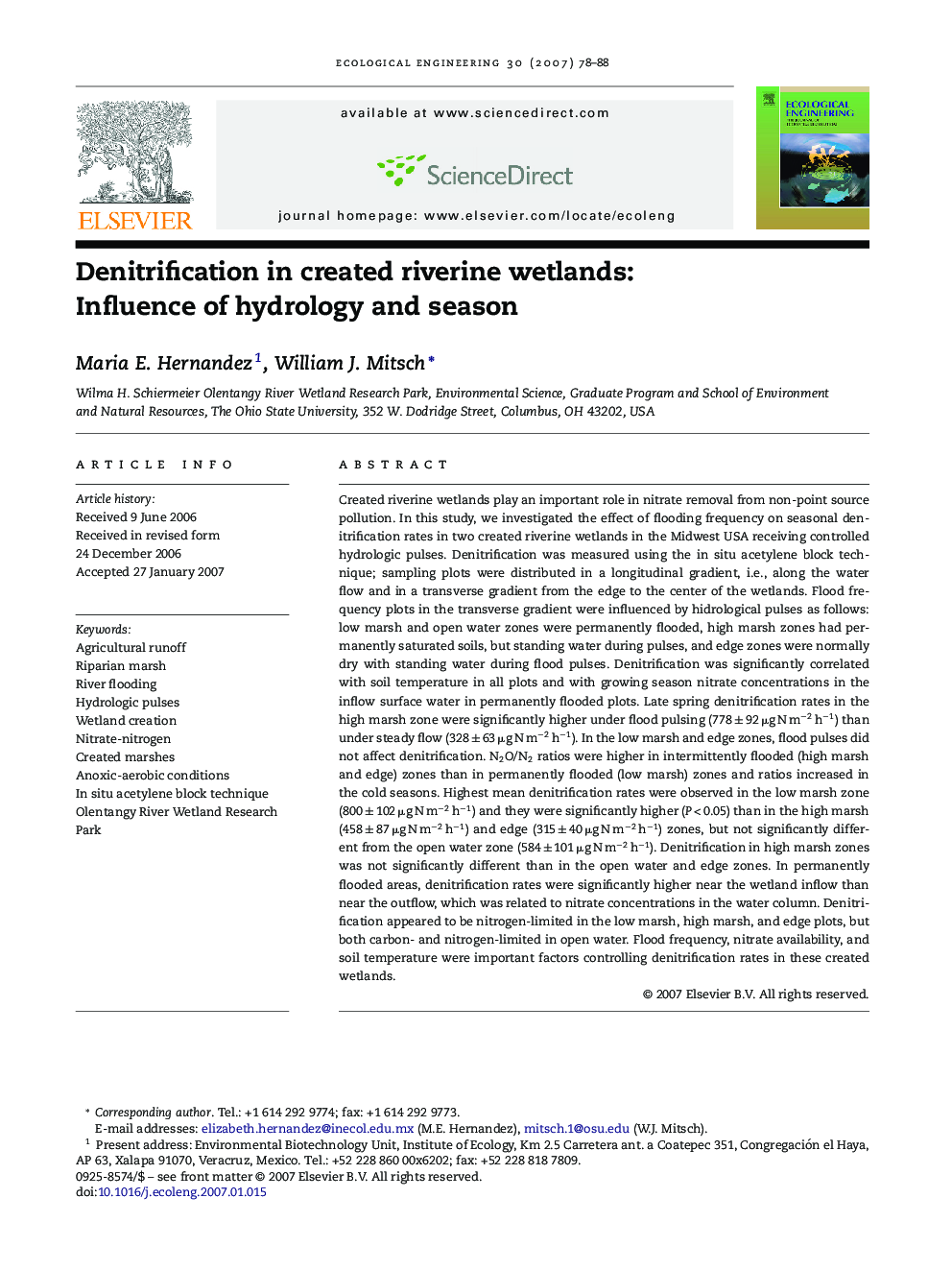| کد مقاله | کد نشریه | سال انتشار | مقاله انگلیسی | نسخه تمام متن |
|---|---|---|---|---|
| 4391115 | 1305212 | 2007 | 11 صفحه PDF | دانلود رایگان |

Created riverine wetlands play an important role in nitrate removal from non-point source pollution. In this study, we investigated the effect of flooding frequency on seasonal denitrification rates in two created riverine wetlands in the Midwest USA receiving controlled hydrologic pulses. Denitrification was measured using the in situ acetylene block technique; sampling plots were distributed in a longitudinal gradient, i.e., along the water flow and in a transverse gradient from the edge to the center of the wetlands. Flood frequency plots in the transverse gradient were influenced by hidrological pulses as follows: low marsh and open water zones were permanently flooded, high marsh zones had permanently saturated soils, but standing water during pulses, and edge zones were normally dry with standing water during flood pulses. Denitrification was significantly correlated with soil temperature in all plots and with growing season nitrate concentrations in the inflow surface water in permanently flooded plots. Late spring denitrification rates in the high marsh zone were significantly higher under flood pulsing (778 ± 92 μg N m−2 h−1) than under steady flow (328 ± 63 μg N m−2 h−1). In the low marsh and edge zones, flood pulses did not affect denitrification. N2O/N2 ratios were higher in intermittently flooded (high marsh and edge) zones than in permanently flooded (low marsh) zones and ratios increased in the cold seasons. Highest mean denitrification rates were observed in the low marsh zone (800 ± 102 μg N m−2 h−1) and they were significantly higher (P < 0.05) than in the high marsh (458 ± 87 μg N m−2 h−1) and edge (315 ± 40 μg N m−2 h−1) zones, but not significantly different from the open water zone (584 ± 101 μg N m−2 h−1). Denitrification in high marsh zones was not significantly different than in the open water and edge zones. In permanently flooded areas, denitrification rates were significantly higher near the wetland inflow than near the outflow, which was related to nitrate concentrations in the water column. Denitrification appeared to be nitrogen-limited in the low marsh, high marsh, and edge plots, but both carbon- and nitrogen-limited in open water. Flood frequency, nitrate availability, and soil temperature were important factors controlling denitrification rates in these created wetlands.
Journal: Ecological Engineering - Volume 30, Issue 1, 1 May 2007, Pages 78–88